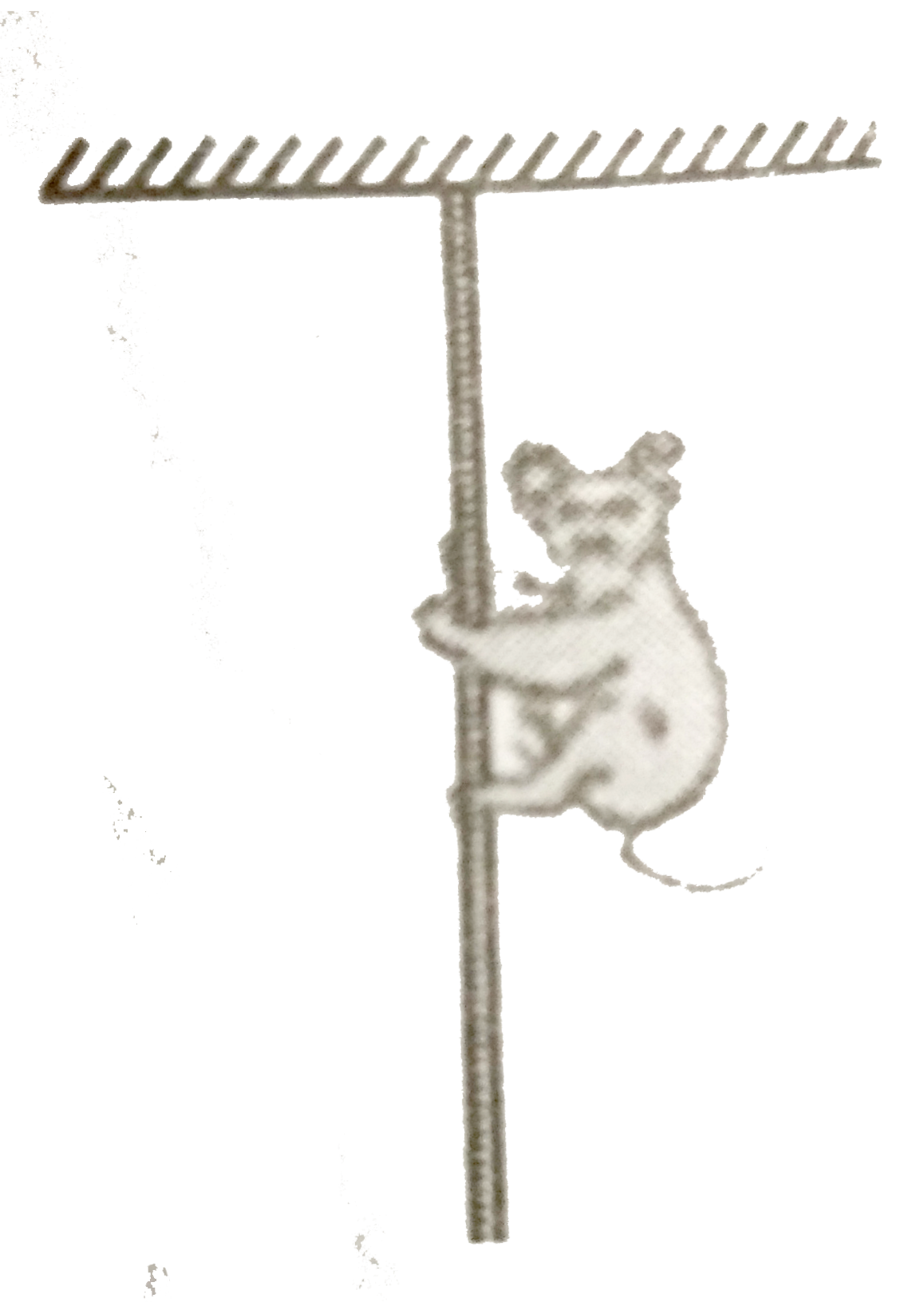A monkey of mass 40 kg climbs on a rope (Fig 5.20 ) which can stand a maximum tension of 600 N. In which of the following cases will the rope break : the monkey
climbs up with an acceleraiton of 6ms−2
(b) climbs down with an acceleration of 4ms−2
( c) climbs up with a uniform speed of 5ms−2
(d) falls down the rope nearly freely under gravity ?
( Ignore the mass of the rope )

When the monkey climbs up with an acceleration of 6 ms2 , the tension in the rope is
T=m(g+a)=40(9.8+6)=632N
It is greater than breaking strength (600 N). So the rope breaks
b) When the monkey clims up with
an acceleration of 4ms−2, the tension in the rope is
T=m(g=a)=40(9.8+4)=552N
It is smaller than breaking strength
(600 N). So the rope does not break
c) When the monkey climbs up with uniform speed of 5ms−1. a=0 the tension in the rope is
T= m(g) = 40(9.8) = 392 N
It is smaller than breaking strength (600 N). So the rope does not break.
d) When the monkey falls down the rope nearly freely under gravity then the tension is almost zero. So the lupe does not break.
Similar Questions
A monkey of mass 40 kg climbs on a rope which can withstand a maximum tension of 600 N In which of the following cases will the rope break : The monkey
(a) climbs up with an acceleration of 6ms−2
(b) climbs down with an acceleration of 4ms−2
(c) climbs up with a uniform speed of 5ms−1
(d) falls down the rope nearly freely under gravity ? (Ignore the mass of the rope.)
View SolutionA monkey of mass 20 kg climbs on a rope which can stand a maximum tension of 300 N. In which of the following case will the rope break . The monkey
View Solution
Knowledge Check
A monkey of mass 40 kg climbs on a massless rope which can stand a maximum tension of 500 N. In which of the following cases will the rope break? (Take g=10ms−2)
 AThe monkey climbs up with an acceleration of 5ms−2.BThe monkey climbs down with an acceleration of 5ms−2.CThe monkey climbs up with a uniform speed 5ms−2.DThe monkey falls down, the rope freely under gravity.
AThe monkey climbs up with an acceleration of 5ms−2.BThe monkey climbs down with an acceleration of 5ms−2.CThe monkey climbs up with a uniform speed 5ms−2.DThe monkey falls down, the rope freely under gravity.A mass of 1 kg is suspended by means of a thread. The system is (i) lifted up with an acceleration of 4.9ms2 (ii) lowered with an acceleration of 4.9ms−2. The ratio of tension in the first and second case is
A3:1B1:2C1:3D2:1
A boy of mass 40 kg climbs up a rope with an acceleration of 2ms−2 . What is the tension in the rope ?
View SolutionA man of 60kg mass is in a lift. Find the apparent weight of the man when the lift is moving (a) up with uniform acceleration 4ms−2 (b) down with uniform acceleration of 2ms−2 (g=10ms−2)
View SolutionFind the acceleration of 3kg mass when acceleration of 2kg mass is ms−2 as shwon in fig.

View SolutionTwo monkey of masses 10 kg and 8 kg are moving along a verticle rope as shown in fig. the former climbing up with an acceleration of 2ms−2, while the later coming down with a uniform velocity of 2ms−2. Find the tension in the rope at the fixed support.

View SolutionBig Cat which can climb a tree is
View SolutionA money of mass 40 kg climbs up a rope, of breaking load 600 N hanging from a ceiling. If it climbs up the rope with the maximum possible acceleration, then the time taken by monkey to climb up is [length of rope is 10 m]
View Solution
